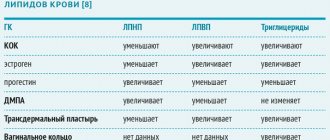Hundreds of types of medications are developed annually for the treatment of gynecological diseases . And yet, some folk remedies based on medicinal herbs still successfully compete with them in effectiveness and safety. Two plants occupy a special place among them: red brush and hogweed. They have a component composition that is not rejected by the female body, which greatly increases their therapeutic value.
It is important to remember that unauthorized use of medicinal compositions from boron uterus and red brush can lead to negative results . Their use should be included in the therapeutic complex and performed under the supervision of the attending physician. Despite the similarities in the action of the components of these two plants, the body perceives them differently. Therefore, they should be taken separately and not used as ingredients for one product.
Preparation of medicinal products
Decoction: crushed red brush root mixed in water, simmer in a water bath for 15 minutes, cool and strain.
Tincture: pour the crushed root with diluted medical alcohol (40 percent), leave for 30 days in a dark place.
Reception features
Products based on red brush and boron uterus are included in a single therapeutic complex, but they should be taken separately.
Dosage
Decoction: drink half a glass 3 times a day at the same time.
Tincture: take 40 drops 3 times a day before meals.
Method of alternating herbs
In addition to the root of the red brush and the grass of the uterus, decoctions and infusions of elecampane, sage, knotweed and other medicinal plants are used in the treatment of gynecological diseases. Such complex therapy accelerates the solution of reproductive problems and the elimination of inflammatory processes.
During a course of herbal treatment, you must follow several recommendations:
- During menstruation, stop taking the medication due to the risk of bleeding. Start the monthly course from day 3-5 of the cycle.
- Compositions based on boron uterus and red brush should not be used within the same monthly course. Alternate them one after another.
- A one-component monthly phytotherapeutic course is carried out over 21 days. If decoctions and infusions of other medicinal herbs are additionally used, then 7 days are allotted for their administration. The course of taking the main drug is reduced to 14 days.
Stimulation with clostilbegit
Clostilbegit is a drug that enhances the production of hormones through a direct effect on the pituitary gland and hypothalamus, which then stimulates the maturation of follicles. Stimulation of ovulation with clostilbegit is a fairly well-proven procedure - pregnancy occurs in 40% of cases.
An important factor here is a thorough medical examination, during which the dose of clostilbegit should be established, as well as a further action plan, that is, a clear decision whether the egg will be fertilized naturally, or whether IVF, ICSI, etc. will be necessary.
As a rule, taking clostilbegit begins on the fifth day of the menstrual cycle. Typically, the course of treatment begins with a dose of 50 g, but, again, everything is individual, and without the supervision of a doctor it is better not to experiment with even the most proven proportions and frequencies of use of this drug. During use, increased sexual activity is recommended, which will increase a woman’s chances of becoming pregnant as soon as possible. If there are no visible results from the course of treatment, while using clostilbegit to stimulate ovulation, the doctor may prescribe injections of human chorionic gonadotropin (hCG). If such treatment is ineffective, the woman is asked to repeat stimulation, switch to other drugs, or pay attention to surgical methods, such as ovarian cautery and laparoscopy.
Course duration
Despite the recognized effectiveness of red brush root and hogweed in the treatment of gynecological diseases, products based on these plants are not an absolute panacea, and it takes a certain period of time to obtain tangible positive changes. Fairly simple reproductive dysfunctions can be eliminated within 1-2 months of therapy. At the same time, for the treatment of complex advanced diseases, a standard course of treatment will be required, designed for a period of 3 to 6 months.
Drugs to stimulate ovulation
However, clostilbegit is far from the only drug used to stimulate ovulation. Among the most popular in use, it is also worth highlighting the following tools:
- Puregon is a gonadotropic drug that stimulates the pituitary gland to produce several important sex hormones. Puregon is universal in use, as it is suitable for both further natural and in vitro fertilization of the egg.
- Menagon is a drug from the same gonadotropic family, producing the same hormones and increasing the concentration of female hormones - estrogens. Menagon is considered the most effective drug for stimulating follicle growth.
- Duphaston is a progestin tablet that helps the endometrium attach to an already fertilized egg. Typically used to consolidate the results obtained when using the drugs to stimulate ovulation mentioned above.
We must not forget about the hCG injection, which is given after the completed course of taking gonadotropins, and is the last step towards stimulating ovulation, provided that the preliminary treatment with drugs was successful. As a rule, ovulation occurs within a day after the injection.
The course of pregnancy in women with PCOS
Patients with PCOS are at risk during pregnancy with unfavorable factors. Quitting smoking, changing your work and rest schedule, switching to proper nutrition are the main aspects of pregnancy planning.
When pregnancy occurs naturally, the risk of miscarriage is minimal and does not depend on the degree of obesity. After ovulation induction, the risk of miscarriage increases and is comparable to other forms of infertility treatment.
Against the background of PCOS, pregnant women are at risk of developing gestational diabetes and hypertension, which can subsequently negatively affect the health of the newborn. To exclude these factors, observation by an obstetrician-gynecologist and endocrinologist is recommended.
Causes of breast cysts
Mastopathy is a hormonally dependent pathology that occurs in women of reproductive age. Cysts as a manifestation of the fibrocystic form of pathology appear in 50-60% of patients. Small cysts can be found in young women; after 35 years, formations larger than 1-2 cm are more often detected.
Women's breasts are sensitive to changes in the concentration of estrogen in the blood. With the appearance of relative or absolute hyperestrogenism, the likelihood of dyshormonal pathologies increases. The main risk factors for developing breast cysts are the following:
- reproductive history - absence of pregnancies and childbirth, first late pregnancy, early menarche, abortion, IVF, refusal to breastfeed;
- endocrine pathologies – the risk is higher for diseases of the ovaries, thyroid gland and adrenal glands;
- problems with the digestive system - impaired utilization of hormones in the liver in various forms of hepatitis;
- neurogenic causes - the appearance of cysts is associated with stress, sexual dissatisfaction, head and neck injuries, increased intracranial pressure, neuroinfections;
- metabolic disorders - with diabetes and excess weight, a hormonal imbalance appears, which leads to an increase in estrogen in the blood.
Breast cysts are often encountered by women who suffer from uterine fibroids, endometriosis and other gynecological pathologies.
Ovulation after stimulation
Every woman’s body reacts differently to different external influences. Thus, successful ovulation after stimulation occurs the first time in only 20% of women, the second - in 5%, and the third - in 3%. In the intervals between stimulations, 6% of women manage to become pregnant, and another 6% falls on women who have had more than three stimulations, which, by the way, is not particularly recommended. In 60% of women, pregnancy does not occur even after intense stimulation of ovulation.
In the case of a successful pregnancy after ovulation stimulation, the woman needs to be under close medical supervision during the first few months, since at this time the risk of miscarriage is significantly increased. Moreover, in order to avoid fetal hypoxia, the woman will have to periodically undergo blood tests to determine the level of hormones in her blood. A full medical examination should also become part of the routine of the expectant mother - after ovulation is stimulated, the factors that negatively affect the course of pregnancy become much greater than during a natural pregnancy.
Reviews about ovulation stimulation
As mentioned above, the initial result of ovulation stimulation varies depending on the individual hormonal background of the woman. So, based on reviews about ovulation stimulation found on the forums of expectant mothers, we can draw the following conclusions:
- After each cycle of stimulation, the cysts increase significantly in size, and the last cycle, after which pregnancy occurs, is usually the third.
- Clostilbegit really helps only in isolated cases, and, as a rule, after its use it will be necessary to resort to additional drugs to enhance or consolidate the effect. There will be no benefit from its constant use, therefore, if after the second cycle there are no visible changes, you should switch to another drug, or to another method of stimulating ovulation.
Many reviews say that cheap drugs, which is not surprising, do not bring any effect at all.
Pregnancy after stimulation of ovulation proceeds easily, without any special toxicosis. The only caveat is constant medical supervision.
Symptoms of a breast cyst
Small nodes in the breast tissue are almost impossible to palpate on your own. Therefore, often the symptoms of a breast cyst do not appear until the formation reaches an impressive size.
Signs of a cyst may be nonspecific. This is engorgement of the mammary glands in the second half of the menstrual cycle, the appearance of a feeling of fullness and heaviness. sometimes there is discharge from the nipple. Pain in the mammary gland may be more pronounced, radiating to the shoulder blade, deep into the chest, or into the armpit.
Over time, in the initial phase of the cycle, a small nodular formation can be felt in the mammary gland. In advanced cases, it reaches 6-8 cm in diameter and deforms the breast.
A little physiology
The endometrium is the mucous membrane of the uterus that lines the organ from the inside. The shell is supplied with a large number of large blood vessels. Its main task is to create favorable conditions for implantation of the fertilized egg. The average normal thickness of the endometrium is 7 mm. Both thickening and thinning of this layer lead to failure in conception.
Normally, the endometrium consists of two layers - basal and functional. The main feature of the endometrium is its very high sensitivity to monthly changes in hormonal levels. A new menstrual cycle begins with the rejection of the functional layer of the mucous membrane. Outwardly this is manifested by menstruation. The concentration of hormones is at a functional minimum. After the end of menstruation, the concentration of estrogen, which is responsible for the growth of the endometrium, begins to gradually increase. The functional layer is gradually restored - this is the regenerative phase of the menstrual cycle. At the same time, a follicle matures in one of the ovaries.
Approximately in the middle of the cycle, when the amount of estrogen is at its peak, ovulation occurs - a mature egg is released into the abdominal cavity, then into the ampullary part of the fallopian tube, where conception occurs.
In place of the burst follicle, a corpus luteum appears, producing progesterone. Under its influence, glands begin to mature in the endometrium - the mucous membrane prepares for implantation of a fertilized egg. If conception does not occur, the levels of progesterone and estrogen begin to gradually decrease. As soon as it reaches a minimum, the functional layer will begin to be rejected again. A new menstrual cycle will begin.
Changes in the uterine mucosa during the cycle
Useful properties of the red brush
Rhodiola tetramer contains many useful substances: essential oil, organic acids, tannins, vitamins and microelements, sugars, flavonoids, anthocyanins and glycosides.
The mutual action of all these components contributes to:
- — elimination of hormonal imbalance associated with dysfunction of the adrenal glands, thyroid and gonads
- - restoration of the menstrual cycle
- — elimination of inflammatory processes caused by fungal, bacterial and viral infections
- - cleansing the body of toxins and wastes
- - normalization of metabolism
- - increase in hemoglobin
- - strengthening immunity
- — improving performance
- - relieving vascular spasms
- - reducing the risk of cancer
- increasing the body's endurance
- increase potency
In addition, the red brush is very calming and improves sleep.
Traditional healers use the plant to treat:
various menstrual cycle disorders- female and male infertility
- mastopathy
- fibroids
- cervical erosion
- adnexitis
- endometrial polyps
- endometriosis
- ovarian cysts
- polycystic ovary syndrome
- ureaplasmosis
- gardnerellosis
- thrush
- vulvovaginitis
- colpitis
- dysbacteriosis of the vagina
- severe symptoms of menopause
- anemia
- liver and kidney diseases
- adrenal diseases
- cystitis
- epilepsy
- prostatitis
- prostate adenoma
However, not everyone is allowed to use infusions and decoctions of red brush. Thus, ingestion of the plant is strictly contraindicated :
- during pregnancy and breastfeeding
- for high blood pressure
- when taking synthetic as well as natural hormonal drugs (licorice, clover, hops, etc.)
- during menstruation
- for heart problems
- for individual intolerance
- for allergic reactions
Conservative treatment by an endocrinologist
With PCOS, tissue sensitivity to insulin decreases, which is characteristic of type II diabetes. To increase the sensitivity of cells to insulin, metformin (MF) is prescribed.
The drug normalizes carbohydrate metabolism, reduces the production of male sexual hormones, and stabilizes ovarian function. Taking into account the individual characteristics of the body, any methods of contraception are possible.
The goal of conservative treatment of PCOS is to restore the ovulatory menstrual cycle, eliminating the causes of infertility in women.
Can a breast cyst turn into cancer?
Any neoplasm in the mammary gland should be accompanied by oncological alertness due to the risk of developing into cancer. Breast cysts appear at a young age; after menopause, new cysts do not form. Therefore, all newly identified formations with a structure like a cyst after 50-55 years are oncology.
With a diagnosed breast cyst, there is a risk of infectious complications. The liquid contents of the cyst are a good breeding ground for bacterial infection. Therefore, if an inflammatory reaction occurs, you should consult a doctor.
At the same time, malignancy of the cyst at a young age is not accompanied by symptoms at the early stage of tumor formation. Therefore, it is necessary to undergo periodic scheduled examinations.
Diagnosis of breast cyst
An examination for suspected breast cysts is carried out according to a certain scheme:
- Breast ultrasound helps determine the size, structure of the cyst, and its location. On ultrasound, the walls of the cyst are clearly visualized, its contents and the presence of a capsule are approximately determined. Using Doppler ultrasound, blood flow in the area of the cyst is examined.
- Pneumocystography is an x-ray diagnostic method. Under local anesthesia, the cyst is punctured and air is introduced into its cavity. It helps to better examine wall formations that may be cancer.
- Puncture of a breast cyst - cytological examination; under local anesthesia, a sample of fluid is taken from the cyst. The manipulation is carried out under ultrasound control, which allows for high precision.
Treatment of breast cyst
To get rid of a breast cyst, you need to see a mammologist. The doctor will prescribe additional examination if it is necessary to prepare for surgery. But in most cases, conservative methods are used for treatment - drug therapy and physical therapy.
To treat breast cysts, medications from different groups are used. Some women benefit from hormonal medications that balance out hormonal levels. After their use, the signs of mastopathy decrease, and unpleasant symptoms disappear in the second half of the cycle.
Non-steroidal anti-inflammatory drugs and diuretics are effective in reducing pain and swelling. I can also use iodine preparations, gestagens, dopamine antagonists.
When using physiotherapy, you can reduce swelling, pain, and prevent inflammation. These treatment methods are treated with caution and are used only after consultation with an oncomammologist. Laser and magnetic therapy, electrophoresis with iodine compounds and local anesthetics help effectively.
Treatment of cysts using traditional methods
For folk treatment of breast cysts, various medicinal herbs are used, which should help equalize hormonal levels and resolve the cyst. But such therapy has no evidence of effectiveness, so it cannot be recommended as a primary method.
Warming up, lotions and compresses with decoctions of medicinal herbs can harm or delay the start of treatment. Sometimes such delayed treatment becomes the cause of advanced forms of breast cancer.
Removal of a breast cyst
Breast cysts can be single or multiple; sometimes a woman’s entire breast is covered with small cavities filled with fluid. Removal of the cyst can only be done if it is significant in size. For this purpose sclerotherapy is used. The liquid contents of the cyst are removed from the cyst cavity under ultrasound control, after which a medicine, a sclerosant, is injected into its cavity. It damages the proteins of the cyst wall and causes them to stick together.
Sclerotherapy ensures that the cyst will not appear in this area again. But it does not protect against the development of new lesions with a different localization.
If a woman is diagnosed with a solitary cyst, the doctor may suggest performing a sectoral resection of the mammary gland. In case of multiple small cysts and a high risk of malignant degeneration, a simple mastectomy is necessary.
If you have a dense formation in your breast, make an appointment with mammologists at our Surgery Center in Moscow by calling the numbers listed on the website. Or fill out the feedback form.
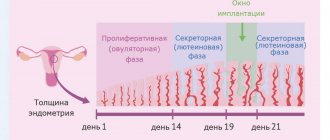
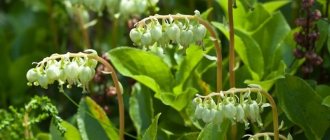
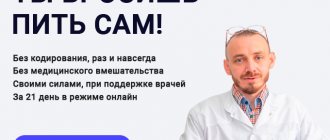
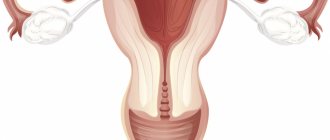

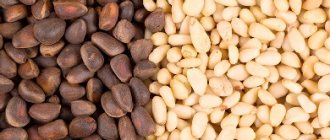
![Table 1. Comparison of the results of treatment with Tribestan for men with oligoasthenozoospermia [7] with mod.](https://ms-pi.ru/wp-content/uploads/tablica-1-sravnenie-rezultatov-lecheniya-tribestanom-muzhchin-s-oligoastenozoospermiej-7-330x140.jpg)
